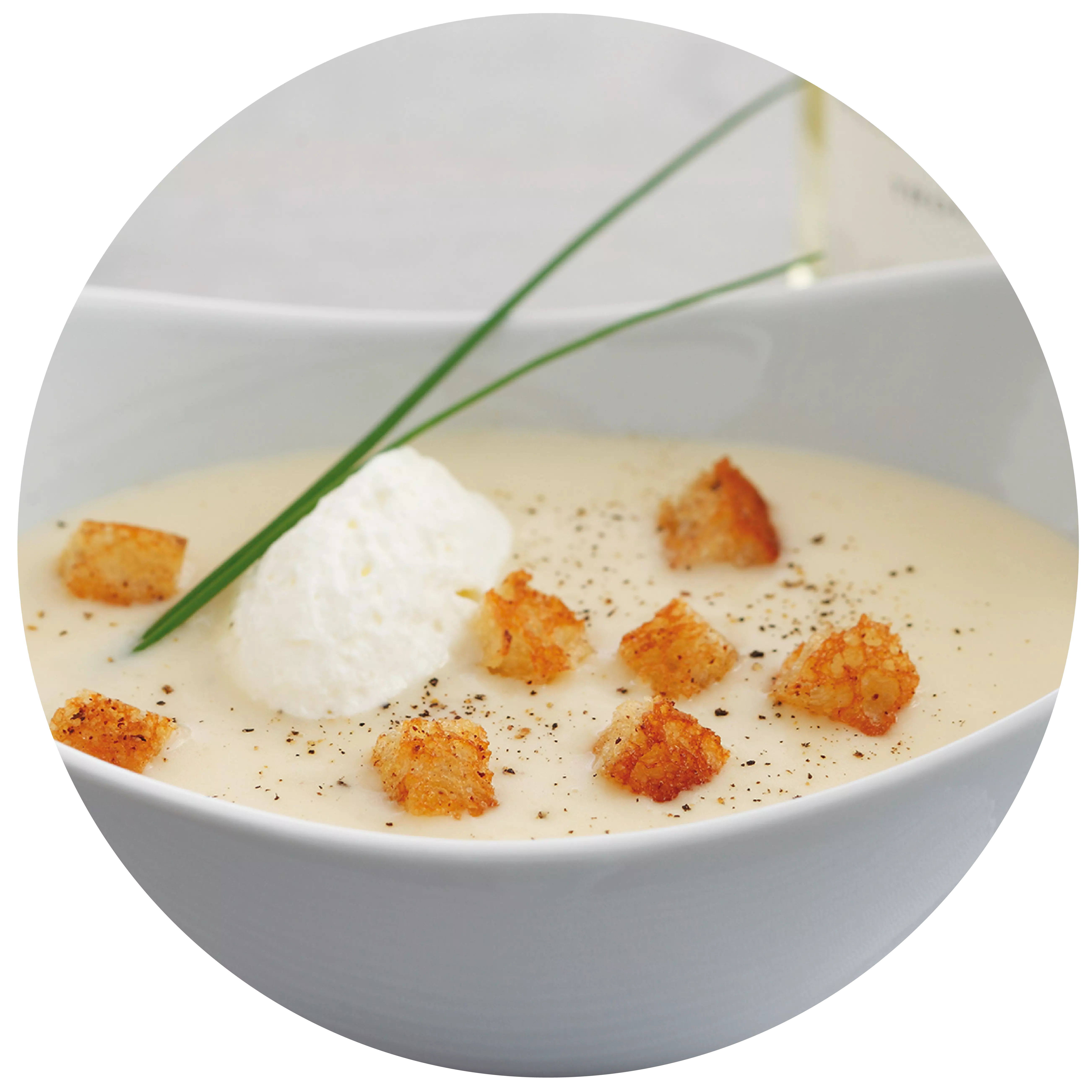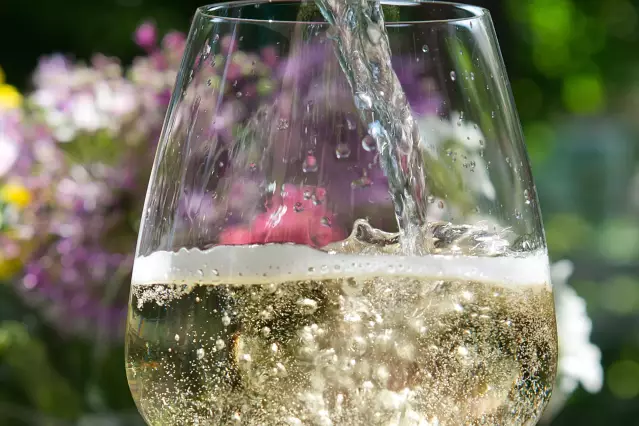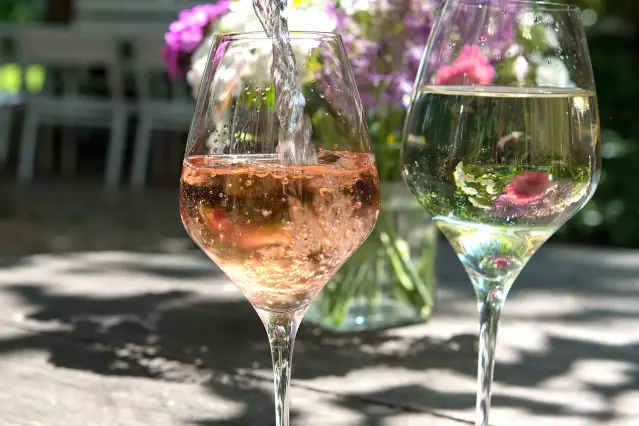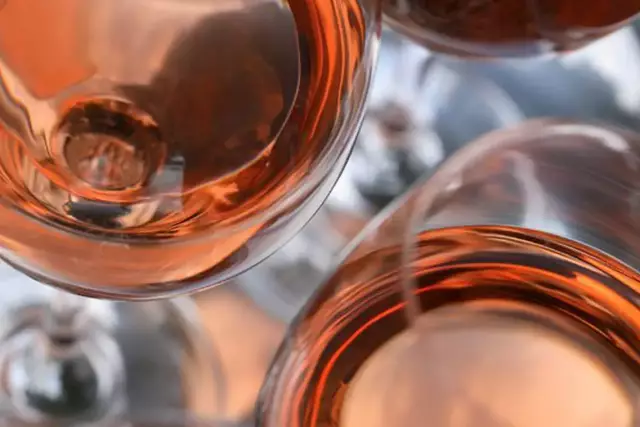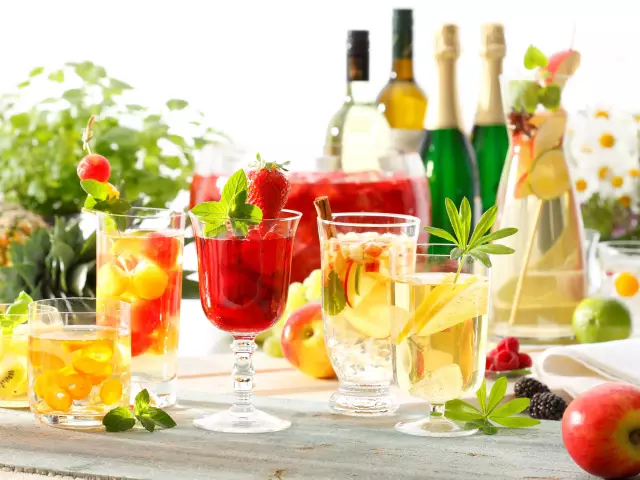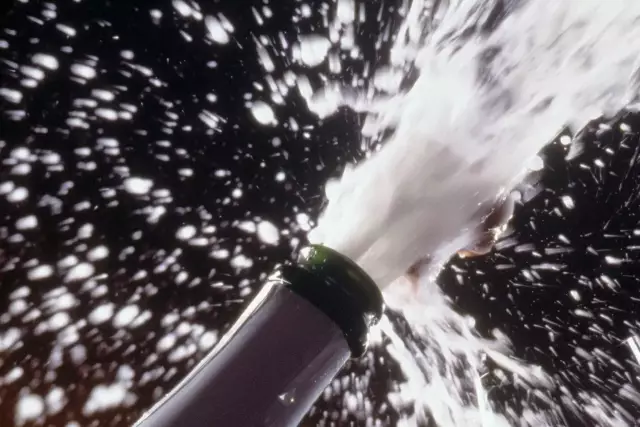Wine spritzers
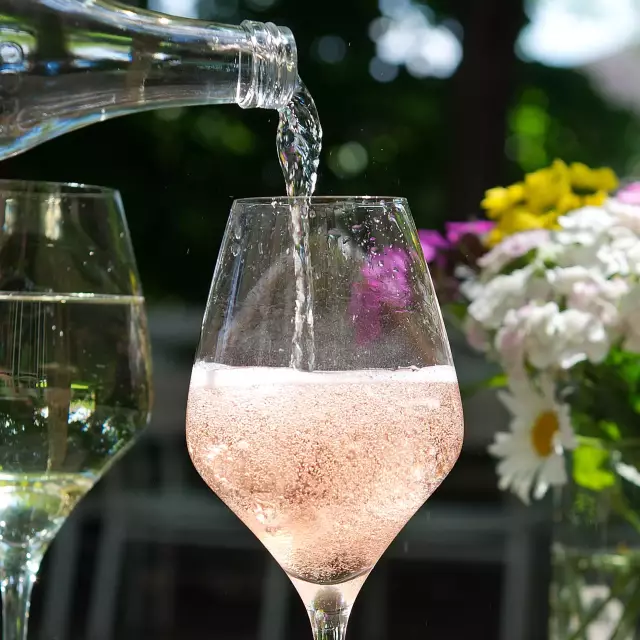
On a hot summer’s day, a well-chilled wine spritzer – consisting in roughly equal parts of fresh white wine and sparkling mineral water – is pure enjoyment.
Facts
-
1 : 1
ist das Mischverhältnis üblicherweise
-
30 %
Wein in der Sommerschorle
The classic is a Riesling spritzer, because this grape variety contains a fresh, fruity acidity and aromas reminiscent of apples, peach and grapefruit. However, other grape varieties are excellently suited as well:
If you prefer a milder acidity, you might like to try using Müller-Thurgau or Silvaner as the wine component.
These days, rosé spritzer is becoming more and more fashionable. It’s a bit more expressive on the palate than a white spritzer and boasts a lovely summerly colour.
And, of course, red wine spritzers have their devotees as well. If you’re one of them, you should preferably use grape varieties that are low in tannins, such as Portugieser, Pinot Noir and Meunier (Schwarzriesling), since tannins and carbonic acid do not harmonize.
Combined with mineral water, the chosen wine makes for a fruity-fresh summer drink.
It's all in the mix
Traditionally, you mix wine and water in equal parts for a spritzer. The resulting drink has an alcohol content of 5-6 % vol. If you prefer a stronger drink, you might increase the wine ratio a little.
As a rule, you use dry wine for a spritzer, but that’s as much a matter of personal taste as it is with wine in general. Using semi-dry or even sweet wine simply results in a less tangy spritzer.
The water used for the spritzer should have as little of its own taste as possible, otherwise it might cover the wine’s aromas too much. As far as the carbonic acid content is concerned, we suggest medium to strongly sparkling mineral water. And if you have a really sweet tooth, you can try and prepare your wine spritzer with lemon soda rather than mineral water.
What does a Palatine understand by "Trollschobbe"?
The Palatine Trollschobbe is a spritzer made from wine and sparkling wine, i.e. much more substantial than the conventional spritzer made from wine and water.
Varietals

with apples and nuts Tarte flambée
with apples and nuts
- 250 Gramm Weizen- oder Dinkelmehl
- 150 Gramm Crème fraîche
- 150 Gramm körniger Frischkäse
- 2 säuerliche Äpfel
- 1 - 2 Zwiebeln
- 30 Gramm Walnüsse oder Haselnüsse
- 15 Gramm Hefe
- 1 EL Zucker
- 2 EL Olivenöl
- 2 Zweige frischer Thymian
- Nach Bedarf Salz & Pfeffer
- 200 ml warmes Wasser
For the yeast dough, sieve the flour into a bowl and make a well in it. Dissolve the yeast in a little warm water and pour into the well. Cover the bowl with a cloth and leave to rise for 10 minutes. Then knead the pre-dough with the dough hook of a hand mixer and gradually work in the warm water, the oil and a teaspoon of salt. Leave the kneaded dough to rise until it has doubled in volume (approx. half an hour, in a warm place).
Cut the onions into wedges. Roughly chop the nuts. Core the apples, cut into slices (the thicker the apple slices, the juicier the tarte flambée) and sprinkle with the sugar.
<p
<p>After resting, divide the dough and roll out each half on a baking tray lined with baking paper. Preheat the oven to 220 °C (top and bottom heat)
Spread the crème fraîche evenly over the tarte flambée and top with the apple slices and onion wedges. Spread the fresh cheese on top and sprinkle with the walnuts. Sprinkle with a little salt and pepper.
Bake on the lowest shelf for 12-15 minutes and sprinkle with the fresh thyme before serving.
- Riesling (halbtrocken & feinherb)
- Riesling (lieblich)
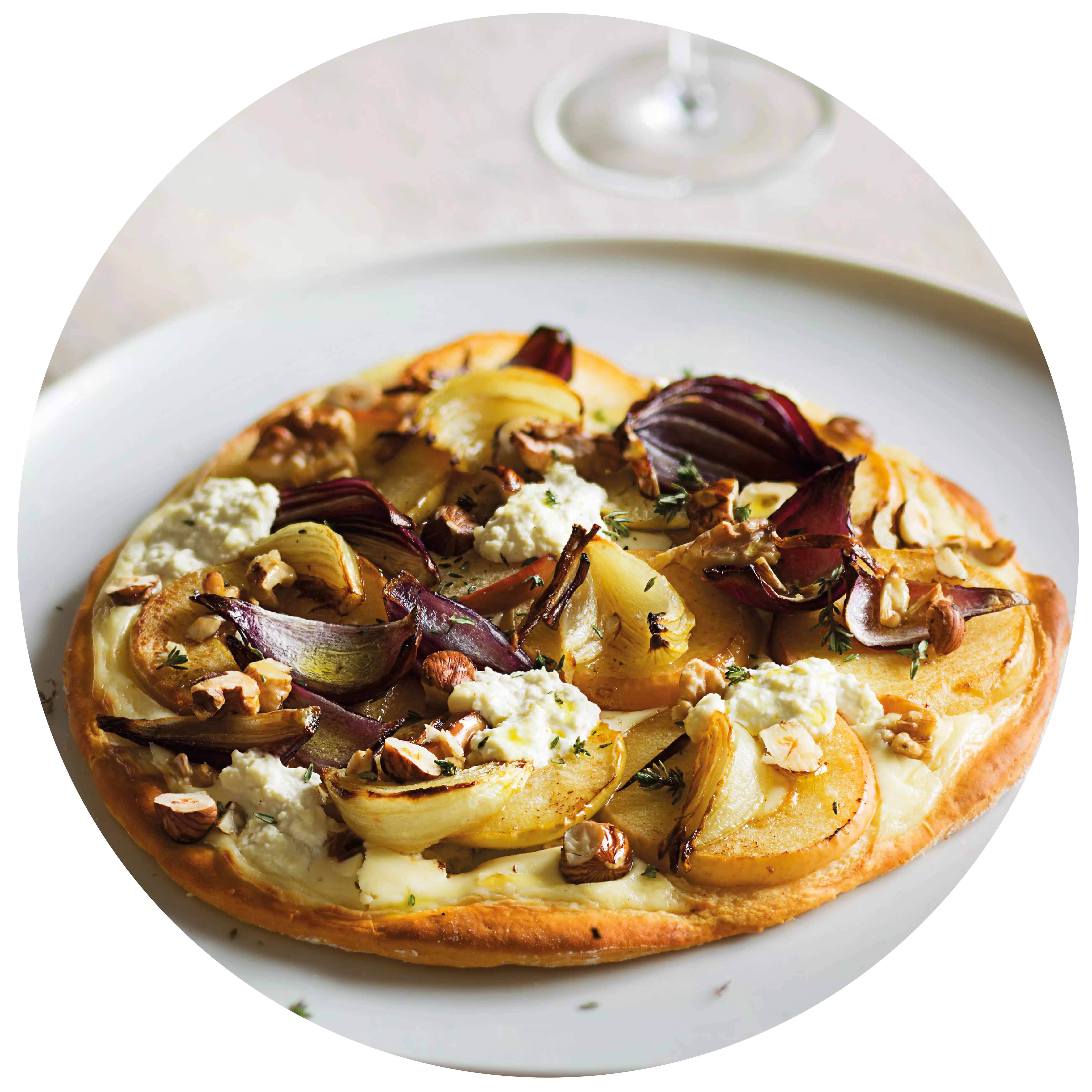
with wild duck breast, porcini mushrooms and glazed chestnuts Herb salad
with wild duck breast, porcini mushrooms and glazed chestnuts
- 150 Gramm Wildkräuter
- 4 EL Olivenöl
- 2 EL Balsamessig
- 8 Stück Wildentenbrüste (a 100g)
- 2 EL Sonnenblumenöl
- 4 EL Honig
- 1 EL Thymian
- 200 Gramm Steinpilze
- 20 gekochte Maronen
- 100 ml Apfelsaft
- 2 El Zucker
- nach Belieben Salz & Pfeffer
Clean, wash and pat dry the wild herbs. Marinate with olive oil and balsamic vinegar and season with salt and pepper.
Preheat the oven to 220°C top and bottom heat. Season the wild duck breasts with salt and pepper, sear on the meat side in a pan with sunflower oil and cook in the preheated oven for about 8 minutes on the skin side. Remove the duck breast, brush the skin side with honey and thyme and roast for another 2 minutes on a high heat until crispy.
Clean the porcini mushrooms and cut into slices. Fry in a pan in oil on both sides, remove and keep warm. Caramelise the sugar in the pan, deglaze with the apple juice and simmer until the caramel has dissolved. Add the chestnuts and add a little more apple juice if necessary.
- Pinot Blanc (trocken)
- Gutedel (trocken)
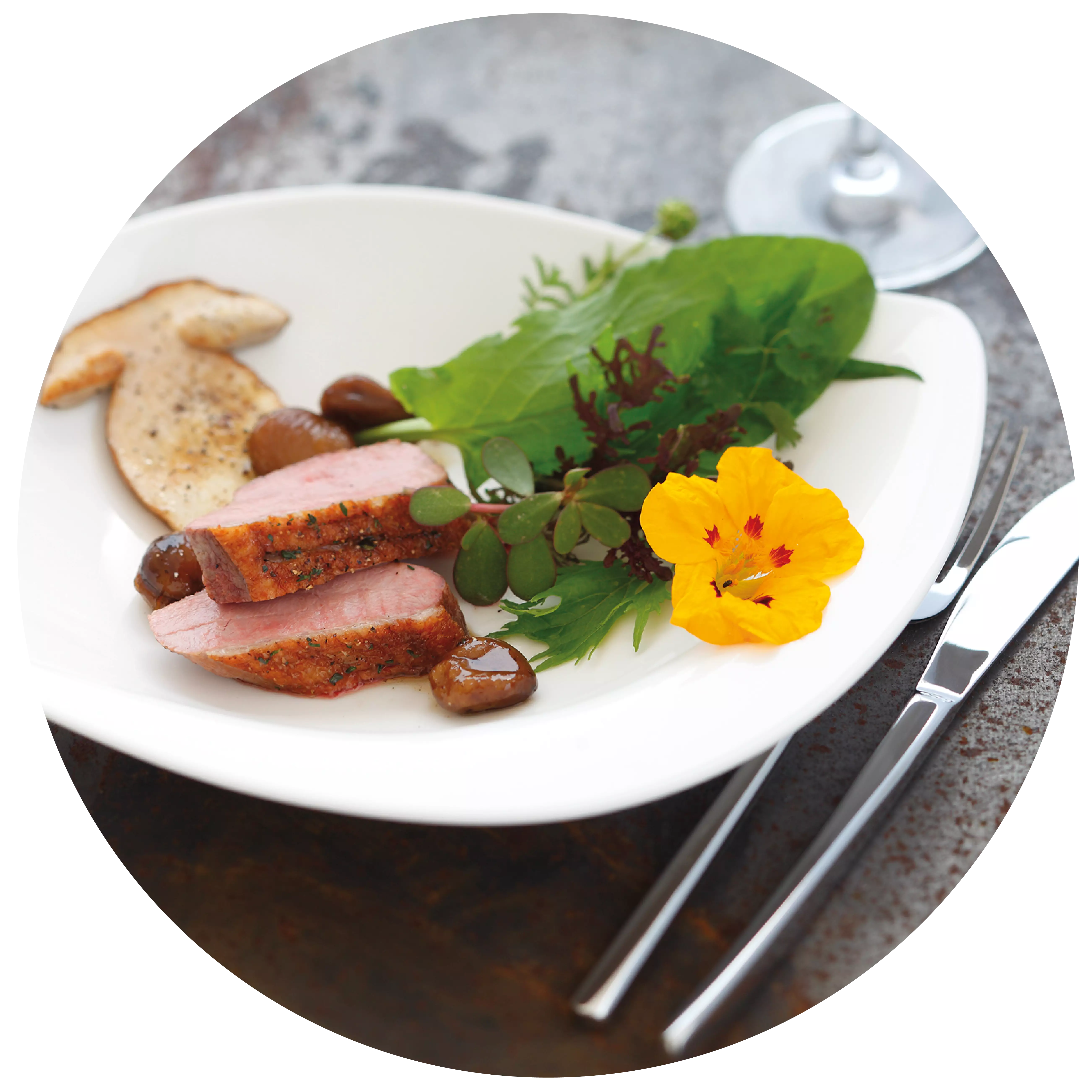
White asparagus with pancake strips Asparagus with "Kratzete"
White asparagus with pancake strips and champagne butter sauce.
- 1kg Weißer Spargel
- 200g Mehl
- 4 Eier
- 150ml Milch
- 1TL Butterschmalz zum Braten
- 2EL Butter
- 1 Zitrone
- 1 Prise Zucker
- 1-3 Schnittlauchröllchen zum Garnieren
- 1 Für die Soße:
- 150g Butter
- 50ml Sahne
- 50ml Sekt
- etwas Salz und Pfeffer
Mix the flour with the eggs, milk and a pinch of salt to make a smooth pancake batter. Leave to soak for 30 minutes.
In the meantime, peel the asparagus and cook in salted water with 2 tbsp butter and a pinch of sugar until al dente. Drain well and keep warm.
<p
<p>Pour the pancake batter in batches into hot clarified butter
.
pour into hot clarified butter. When the underside is browned, use a fork to scrape into pieces. Finish frying until the pieces are golden yellow.
For the champagne-butter sauce, bring the cream to the boil, reduce slightly and stir in the cold pieces of butter (walnut-sized). Add the sparkling wine and season to taste with salt and pepper.
<p
<p>Arrange the asparagus on pre-warmed plates. Add the kratzete, drizzle with the sauce and garnish with chives.
<p
<p>Wine recommendation:
A mild and dry Gutedel or a delicate Kabinett wine from Riesling or Pinot Blanc.
- Gutedel (trocken)
- Riesling (brut)
- Pinot Gris (brut nature)
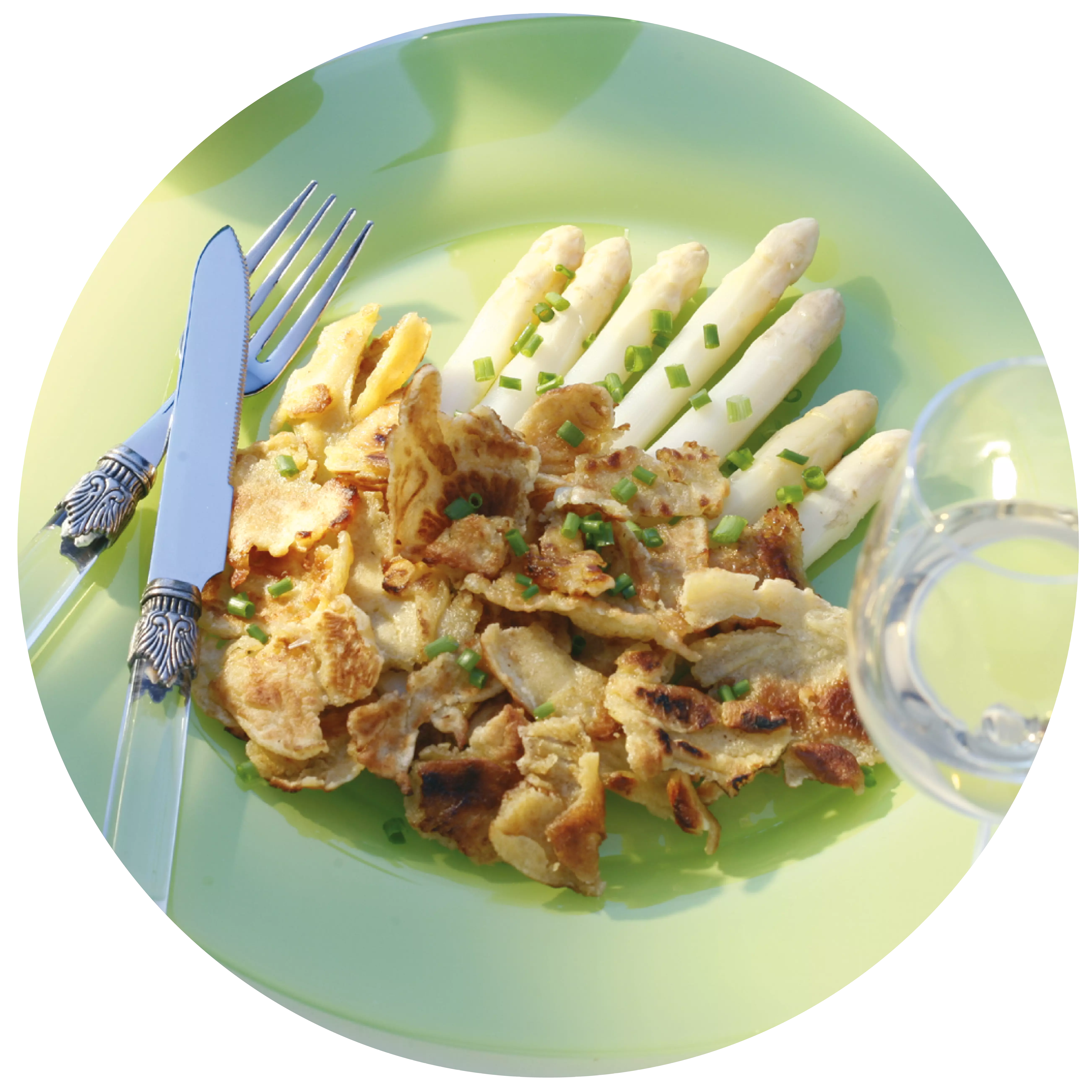
the classic with a difference Franconian cider soup
the classic with a difference
- 500 ml Weißwein (Spätlese)
- 500 ml Geflügelbrühe
- 350 ml Sahne
- 30 Gramm Zwiebeln
- 30 Gramm Weißes vom Lauch
- 30 Gramm Sellerie
- 30 Gramm Karotten
- 30 Gramm Butter
- 180 Gramm Mehl
- 2 Lorbeerblätter
- 1 EL Butterschmalz
- 4 Scheiben Weißbrot
- Nach Belieben Zucker, Muskat, Zimt, Salz
Sauté the vegetables in butter until lightly browned, dust with flour and then add the vegetable stock, wine and 250 ml cream. Add the spices and simmer for approx. 15 minutes.
Remove the crusts from the slices of white bread and cut into 1 cm cubes. Fry in hot clarified butter until golden brown and season with cinnamon, whip the remaining cream until stiff.
<p
<p> Strain the soup and flavour with nutmeg and salt.
Pour into deep plates, garnish with whipped cream and the cinnamon crusts.
- Müller-Thurgau (trocken)
- Silvaner (trocken)
